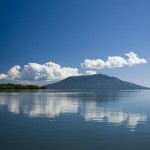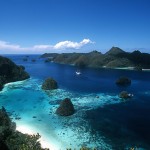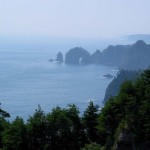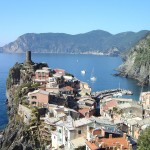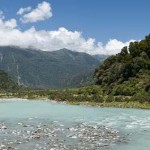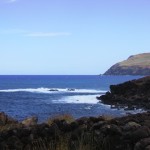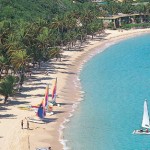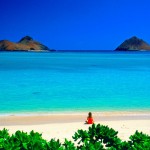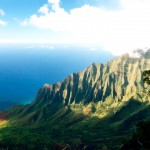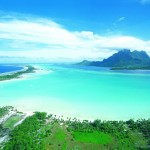An Island between Islands – Nosy Be
With beautiful sandy beaches, small islands around for excursions, a rich marine life that makes snorkeling and diving exciting and quaint town and villages, the Nosy Be Island is close to a paradise.
Location
Located in the Western Indian Ocean, off the east coast of Africa, is Madagascar, the fourth largest Island of the world. The Mozambique Channel separates it from Africa.
When to go
The Tropical climate of the Island of Nosy Be keeps it bright and sunny throughout the year so you don’t have to think too hard on when to go there. The summer season in months of December, January and February is humid. The rains mostly come in the months from November to March. The months from April to October are dry.
The Tsaratanana massif to some extent protects the Nosy Be Island from the strong north-east winds that affect the region in August and [...]
Raja Ampat – the Center of Attraction in the Coral Triangle
Discovered as recently as in 2001, the waters of Raja Ampat archipelago off Irian Jaya, an Indonesian Province on the northwest coast of Sorong, are often referred to as ‘the New Palau’ – courtesy its remoteness, reef system and a vibrant marine life.
Location
Raja Ampat, or the Four Kings, in fact lie in what is known as the coral triangle. This area includes reefs of northern Australia, Indonesia, Philippines and Papua New Guinea, between the Indian and the Pacific Ocean. The Raja Ampat archipelago comprises over 1,500 small islands, cays and shoals. The Misool, Salawati, Batanta, Waigeo and the Kofiau are the main Islands of this 40,000 kilometer square archipelago.
The largest Indonesian Marine National Park – the Cenderawasih Bay, is also a part of Raja Ampat waters.
When to dive here
The season here is more all less constant [...]
Cliffs, caves and beaches en-route Rikuchu-Kaigan Coast
One of the world’s most beautiful coastlines is the Rikuchu coast, a 180 kilometer shoreline on the northwest part of Japan, facing the Pacific Ocean. It is a part of the Rikuchu-Kaigan National Park and extends from the northern part of Iwate Prefucture south to Kesennuma City, Miyagi Prefecture.
The northern part of this coastal park is adorned by high cliffs and rock formations and in the southern half is the typical Rias-type coast.
How to reach
The site is easily accessible by trains and buses. Tour buses and boats too operate to the coast, though boating is not possible in winters.
When to visit
Summers are when you should explore this coast.
Attractions of Rikuchu-Kaigan Coast
The best way to explore the coast is get on the trains on the railway line meandering along the coast. Boarding the train at Miyako would be good to start with.
Miyako [...]
Cinque Terre – A man-made landscape between Sky and Sea
The Cinque Terre means the five lands, which here refers to five villages of Montesso Al Mare, Vernazza, Coriglia, Manarola and Riomaggiore – from north to south, perched on the cliffs over the Mediterranean. The entire Cinque Terre Coastline is a National Park and a Protected Marine Area. Portovenere encompasses the three villages of Fezzano, Le Grazie and Portovenere and the three Islands of Palmaria, Tino and Tinetto.
Location
Eleven miles of coastline on the northwest of Italy, between the Genoa and La Spezia cities, is the stretch of The Cinque Terre, facing the Mediterranean. Portovenere is located in the Italian coast of the Liguria, in the La Spezia Province. Portovenere, Cinque Terre and the Islands are enlisted as the UNESCO World Heritage Site.
Weather
In the months of May and June, it’s usually sunny and warm here, with short [...]
Amidst the dynamic landscape of Te Wahipounamu National Park
In the Island Nation of New Zealand, located in the Southwest Pacific Ocean, are three main Islands – the North Island, the South Island and the Steward Island along with other small offshore Islands.
The South Island, flanked by Cook Strait in the north, the Tasman Sea in the south and the Pacific Ocean in the south and east. On the southwest of this Island is the World Heritage Site of Te Wahipounamu, spread across 26,000 square kilometers, including the coast of Te Wahipounamu.
When to visit
South Island has a temperate climate. The areas in the south and south-west part of the country are more wet and cooler. The Ocean moderates the temperature in South Island, especially that in the west and south, resulting in a cool, temperate climate.
The average temperature of this Island is about 8 degree Celsius. July is the coldest month while [...]
The Moai of Rapa Nui Easter Island
Known locally as Rapa Nui, the Easter Island is at 3,510 kilometers to the west of Chile in the South Pacific Ocean.
This 163.6 kilometer square Island was named Easter Island by the Dutch Admiral Roggeveen who came upon this Island on the Easter Day in 1722.
It is pretty much populated given its isolated location.
When to go
The Rapa Nui Island experiences a subtropical marine climate. The hottest months are January and February with maximum temperature is around 28 degree Celsius on an average. In winters, the temperatures range from 14 degree Celsius to 22 degree Celsius. While most of the rainfall occurs in April-May, be prepared for a downpour at anytime of the year.
The months of July and August, though chilly, are a good hiking season. It’s from January to March that the tourists flock the Rapa Nui Island.
How to go
From Chile, Lan [...]
Peter Island – Sandy White Beach
The British Virgin Islands, located 1200 miles to the southeast of Miami and 70 miles east of Puerto Rico, is home to many beautiful beaches. One of them is the White Bay Beach, at the Peter Island here, which runs along the Sir Francis Drake Channel.
The Island is five miles south of Tortola. It is the fifth largest Island in British Virgin Islands, and the largest private one, covering an area of about 1800 acres.
Peter Island was named after Peiter Adriensen, brother of Abraham Adriensen – Tortola’s patron under the Dutch West India Company in the early 17th century.
On the south, or at the back-side of Peter Island is the secluded beach of White Bay.
When to visit
With a sub-tropical climate, the British Virgin Islands are good in anytime of the year. The months from September to December are the wettest months here and that of February [...]
Lanikai Beach – Epitomizing South Pacific Paradise
The Lanikai Beach in one of the many pretty beaches of the Hawaii and like all of them is simply spectacular and with no public facility developed on the beach, is all the more charming place to visit. The pure crystal clear water brings tourists here who are keen on snorkeling. Lovers of other water sports like surfing, kayaking, paddling etc need not be disappointed as the sea here is fit for everything. Not far away are places that make for good excursions and hence giving you diversions that make you want to come back to the beach again for relaxations and some rest.
Location
The Lanikai Beach is among the most popular beaches of the beaches in the Hawaii. In the Hawaiian language, Lanikai means “heavenly sea” and the Lanikai Beach definitely stands up to the meaning of its name.
Stretching over half a mile, the Lanikai Beach is located [...]
Hike 11 Miles To Enjoy Na Pali Coast In Hawaii
The Na Pali Coast is a small part of the once shield volcano that is said to have risen more than 5 miles from the sea floor to the summit. Like the other islands of Hawaii, the Island of Kauai was originally a plume of magma, called a hot spot. When the volcanic fires cooled down, the island shifted due to tectonic movements and water cooled down. Rains in parts of Na Pali created deep valleys and waterfalls over the precipices. The strong and giant winter waves that exploded against the basalt cliffs created unstable slopes.
Na Pali that we have today with its sinks of valleys, fluted walls, and the sharp ridges is a consequence of these tectonic activities.
Where is it
Napali Coast is the name given to the 15 miles of mountainous shore lines on the northwest of Kauai Islands in Hawaii. Napali, in Hawaiian means the Cliffs. Standing true [...]
Bora Bora Island – A Pearl Of South Pacific
The turquoise water of the lagoons, an exhilarating ride over it by canoes, jet ski or a catamaran sailboat, a sunset view that takes your breath away, cruising along the panoramic views, a vibrant marine life that you can come close to by snorkeling and diving and the souvenir shops that allow you take home the memoirs from here, in short, this is the much acclaimed Bora Bora Island.
The name Bora Bora comes from the Tahitian word Pora Pora, which means “first born”. Legends describe it as the first island to rise when the Supreme God Taaroa fished it out of the waters after the creation of Havai’i. When Captain Cook heard the name, he mistook Pora Pora for Bora Bora and that’s how the name gained currency and is used till date.
As per an early transcription found in 18th and the 19th century accounts, the name of the Island is recorded [...]

